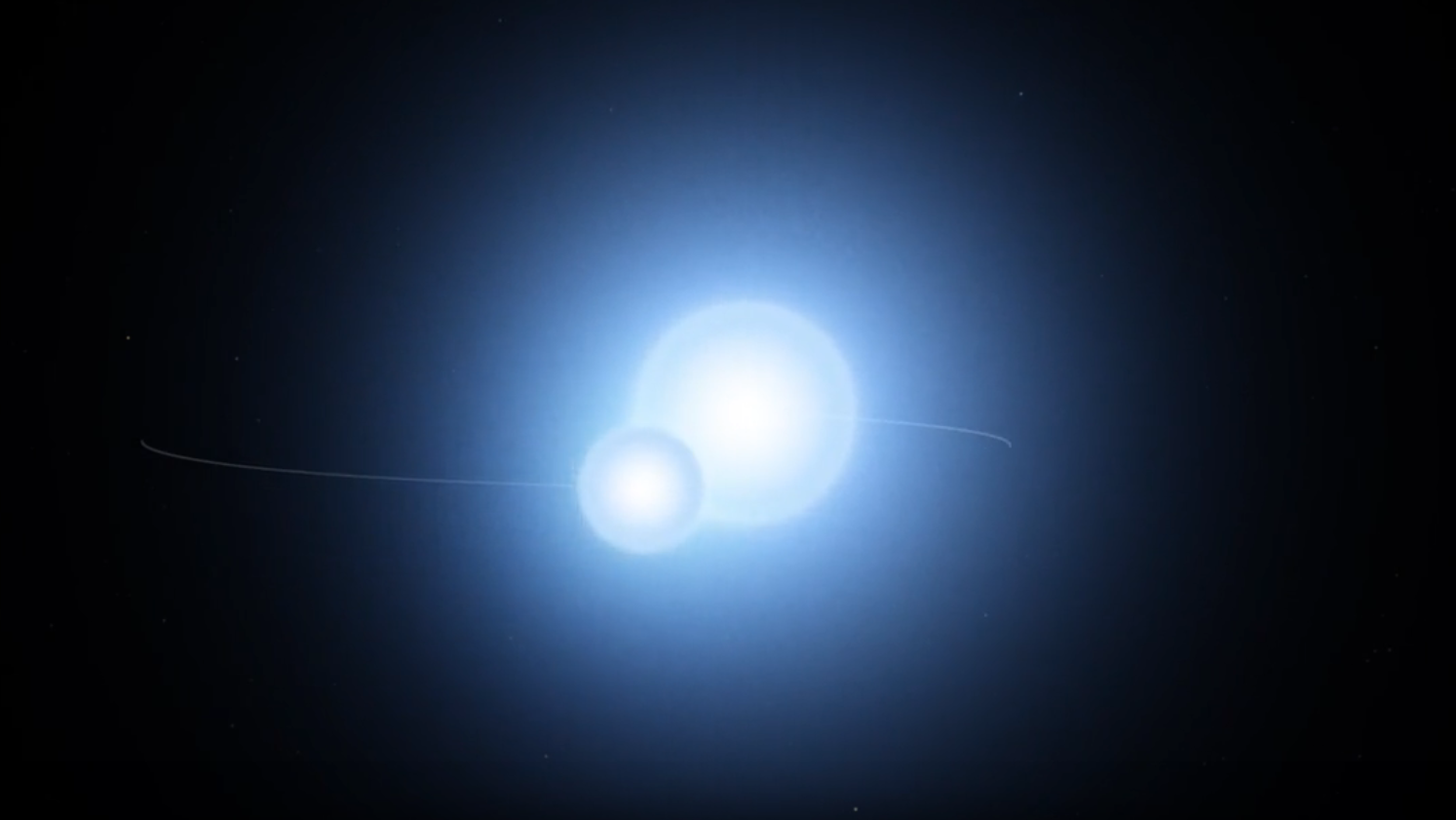Binary star systems are pairs of stars held together by gravity, orbiting a common center of mass. More than half of all stars in our Galaxy are part of a binary or multiple-star system making them surprisingly common. The stars in a binary can vary widely in mass, size, and brightness, and their interactions often shape their evolution in dramatic ways. In some cases, the gravity from one star can drag material from its companion, leading to explosive events like novae or even supernovae. Studying binary systems not only helps us to understand the life cycle of stars but also helps us understand more about the behaviour of matter under extreme conditions.

Image of the binary star Sirius captured by the Hubble Space Telescope with Sirius A in the centre and its white dwarf companion, Sirius B, to the left bottom from it (Credit : NASA)
A team of astronomers from China have discovered an extremely rare pulsar in a binary system whose radiation pulses occasionally get blocked by its companion every few hours. The team, led by Han Jinlin, a researcher from the National Astronomical Observatories of China, published their findings in the journal Science.
Pulsars in themselves are not especially rare, almost 3,500 have been found in our Galaxy alone. They are the dense remnants of massive stars that exploded as supernovae at the end of their life. They emit beams of electromagnetic radiation from their magnetic poles, and as they rotate, these beams sweep across space like lighthouses beam across the oceans. If one of those beams crosses Earth, we detect it as a regular pulse of radio waves, X-rays, or even gamma rays.
 PSR B1509−58 – X-rays from Chandra are gold; infrared from WISE in red, green and blue/max (Credit : By NASA/CXC/SAO (X-Ray); NASA/JPL-Caltech (Infrared))
PSR B1509−58 – X-rays from Chandra are gold; infrared from WISE in red, green and blue/max (Credit : By NASA/CXC/SAO (X-Ray); NASA/JPL-Caltech (Infrared))
The discovery was made using the Five hundred meter Aperture Spherical Radio Telescope (FAST.) It's also known as the "China Sky Eye," is the world's largest single-dish radio telescope. Located in a natural karst depression in Guizhou Province, China, it boasts a 500-meter-wide dish constructed from over 4,400 adjustable panels, allowing it to detect faint radio signals from deep space . FAST began formal operations in January 2020 and opened to international researchers in March 2021. Its primary scientific goals include studying pulsars, fast radio bursts, neutral hydrogen, and conducting searches for extraterrestrial intelligence.
.jpg) Five-hundred-meter Aperture Spherical radio Telescope (Credit : Absolute Cosmos)
Five-hundred-meter Aperture Spherical radio Telescope (Credit : Absolute Cosmos)
This newly discovered system called PSR J1928+1815 is 455 light years away and has given scientists a rare glimpse into binary star processes. In particular the process that leads to the formation of a neutron star or pulsar in a binary pair. In these systems, the heavier star ages faster and eventually collapses into a neutron star or black hole. Meanwhile, the smaller star loses material to its dense companion, causing them to share a common envelope of hydrogen gas. For a short period, and this is the case for PSR J1928+1815, the two stars orbit inside the common envelope. Over about 1,000 years, the neutron star clears away this envelope, leaving behind a hot helium-burning star orbiting the neutron star .
This discovery supports long-standing theories about how stars in binaries exchange mass, shrink their orbits, and eject shared gas envelopes. Studying systems like this helps us to understand stellar evolution, neutron star behaviour, and how such pairs eventually merge to produce gravitational waves. With powerful telescopes like FAST, astronomers hope to find more of these rare cosmic pairs and unlock more secrets of the universe.
 Universe Today
Universe Today
